We know what most dog breeds are with little trouble. Walking down the street, we pick them out. That’s a Border Collie. And, of course, who doesn’t recognize a Pug? The most popular breeds blend into the crowd. We know them and expect to see them out for walks and playing in the local dog park. But now and then, we see something different. A dog catches our attention because it looks…well, not quite like a dog! Something stands out about their coat, their shape, or their face. We start wondering, “What kind of dog is that?” These unique dog breeds aren’t common, and they pique our interest. We’ve put together some of these stand-out canines to introduce you to some of the unique – and interesting – dog breeds out there.
Dog Breeds of the World
Pinning down the exact number of dog breeds in the world gets tricky. Mostly because every group keeps a different list. The American Kennel Club (AKC) lists a total of 340 known breeds, 197 officially recognized. In the United Kingdom, the Kennel Club recognizes 211 breeds. And the Federation Cynologique Internationale (FCI) – the largest dog organization in the world? They recognize 354 breeds. Clearly, the odds that you’ve seen EVERY dog is pretty slim. And some of those pups are rarer than others.
And some of the rarest breeds? Also happen to cost the most. (Which doesn’t help with repopulation) As fanciers encourage notice of their favorite dogs, they do the best they can to revive certain lines. It’s a plan that’s worked in the past when dogs have found themselves on the brink of extinction. And some of the unique dog breeds you may see out today are hoping for that same miracle.
Locating Unique Dog Breeds
Once you lose your heart to a unique dog breed, tracking them down can get challenging. They’re often wonderful pups, working well with families. However, they have low popularity. Rescue groups may not be available due to how rare they are. You may have to search to find a breeder – even OUTSIDE the country. Most unique dog breeds come from Europe, Asia, and Africa.
Always check for the reputation of the breeder FIRST. The odds aren’t high that you’ll find a unique dog breed at a puppy mill (they’re too rare), but it’s important to remain cautious. You should get to see both parents and hear about their health history. Even if you have to start with conversations via Skype or Zoom, make sure you feel comfortable. After all, you CAN use the Kennel Club and FCI to help you find appropriate kennels overseas.
Concerns with Unique Dog Breeds
Before you go scrambling for your passport, make sure you do your homework. While gorgeous to look upon, these pups often have specific needs. Herding breeds share similar characteristics – no matter HOW they look. And if you’re not prepared with plenty of room for your spectacular new pup to run around? That isn’t fair. You’ll have gone to the trouble of purchasing an expensive plane ticket (and all of the extra paperwork) to make your new canine companion miserable.
Also, due to the small genetic populations of these rare dogs, you need to stay on top of health concerns. As groups work to revive the breed, they often encounter health issues. You’ll want to make sure you know ALL of the potential problems. And it wouldn’t hurt to make sure you have pet insurance on hand.
Unique Dog Breeds
These pups? They stand out in a crowd. When you take your walks or visit the dog park, you’re sure to draw attention. And most people will wonder if your furry friend is real! These unique dog breeds encourage everyone to come over and ask questions. People will want to know what kind of dog you have, where they came from, and what they’re like. And since you did all of your homework before you brought them home, you’ll have the answers. As an owner, you’ll also serve as a breed ambassador, which is an important job. Who knows – you may encourage someone else to bring one of these pups into the area!
Bedlington Terrier
That’s right: it’s a dog that looks like an adorable lamb! The Bedlington Terrier stands out from other dogs with a curly white coat and an arched back. And while this unique dog breed makes people do a double-take when they’re out on a leash, they originally worked as hunters in 19th-century England. One of the fastest members of the Terrier Group, they took on everything from rats to badgers and even the occasional otter! Those soft white curls protected them from inclement weather while they were on the hunt. Later down the road, owners figured out subtle grooming turned these dogs into bounding lambs. And now they happily cuddle with their owners and work as watchdogs around the house.
Bergamasco Sheepdog
“Is your hair natural?” Believe it or not, the flocks of the Bergamasco Sheepdog are 100% natural. Three different textures of their felt-like hair weave together, creating the flocks. Serving as herding dogs in the Italian Alps, the thick hair protected them from the icy winter conditions. They also have LONG eyelashes that kept the hair out of their eyes AND served as tinting to prevent snow blindness. And while all of those flocks look intimidating, they’re a cinch to take care of. Bergamascos don’t shed! (Talk about a unique dog breed) They remain loyal to their owners, staying close to their families. But they’re also friendly and enjoy meeting new people.
Berger Picard
Fans of Because of Winn-Dixie already know the Berger Picard. But to most people? This unique sheepdog looks like a loveable mixed breed. Pronounced “Bare zhay Peecar,” the beautiful Berger comes from France – and almost vanished following World War II. They returned throughout the world through the work of breed fanciers (and the movie didn’t hurt, either). They stood watch over their flocks in the French countryside, the wiry coat keeping them safe and dry. Bergers need room to run and burn off their energy, and you’ll love their playful antics. When settled at home, though, they love nothing more than snuggling beside you.
Cesky Terrier
Not many dogs have the honor of getting to serve as the national dog of a country. But Cesky Terriers? They’re the National Dog of the Czech Republic. You’ll even find them on postage stamps! In the U.S., though, there are only about 600 dogs in the entire country. So if you happen to stumble upon one, you’ll definitely consider them a unique dog breed. Related to both the Sealyham and Scottish Terriers, they have full heads of hair that extend past their eyes and down to their flowing mustaches. It’s a regal look that stands out in a crowd. With the expected Terrier energy, they LOVE to play. But they also adore their owners and stick close to the people they love.
View this post on InstagramA post shared by ЧЕШСКИЙ ТЕРЬЕР |OLGA MANSUROVA (@cesky_terrier_ollaland)
Mudi
Hungary produced many unique dog breeds developed for herding, including the Pumi. But the Mudi stands out with its beautiful array of fluffy hair. These energetic pups come in multiple colors, and they take their jobs seriously. Now that herding isn’t as prominent, Mudis have switched over to working search-and-rescue! Unhappily, while stunning to look upon and loving, their numbers are dropping. Throughout the world, only a few thousand remain. Mudi fanciers are working hard to rescue the breed by encouraging people to learn more about these historic dogs.
Saluki
Taking a Saluki out in public catches attention. However, it’s usually because people think the poor thing is starved! These tall, sleek dogs take the sighthound plan and carve it even thinner. But they ARE meant to be that thin. In Egypt, the Pharaohs bred Salukis to hunt, and they needed a lean profile to run as fast as possible. These dogs were SO adept, they were often mummified with the Pharaoh out of honor. Today, their furry ears and sleek profile draw people’s attention. They ARE every bit as fast as they were in their ancient past, though. You’ll want to work on recall training if you plan to remove the leash.
Schipperke
Occasionally referred to as “little black devils,” Schipperkes are unique dog breeds that remind people of tiny black bears. And they have the personalities to back it up! In the 1800s, Schipperkes worked as guard dogs on barges and canals throughout Belgium. They used their boundless energy to hunt for vermin between the boats. And their bark? It drew attention from everywhere. They’ve retained those qualities today, making them loyal guardians of the home. And while it’s important NOT to let them off-leash (they’re FAST), you’ll find yourself the center of attention when people catch sight of that fluffy black coat.
Swedish Vallhund
At first glance, people think Swedish Vallhunds are an unusual mix of Corgi. Then they stop and look again. The original “Viking Dog,” Vallhunds DO have short legs and long bodies, but that’s where the similarity ends. The National Dog of Sweden, they trace their ancestry back to the NINTH century! You’ll find them in multiple colors, as well as with different lengths of the tail. Some have bobtails (no tails), while others have a tail that curls over their backs. They herded cattle, hunted down vermin, and guarded the home. And with so many jobs in their past, they’re comfortable doing anything you ask today. They’re lovable little dogs who aim to please.
Rare Canine Jewels
Everyone has their favorite dog breeds. And some people? They have tastes that run to unique dog breeds. This is why you may see different canine characters when you’re out and about. It’s the perfect opportunity to learn about these new pups and where they come from around the world. Especially as many of them are so rare.
With better knowledge of unique and rare dogs? We may prevent some of the best canines from disappearing.




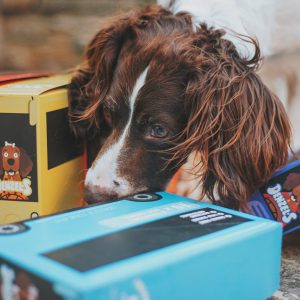


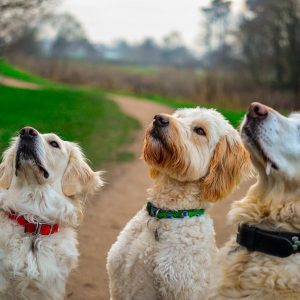


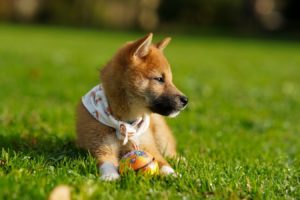
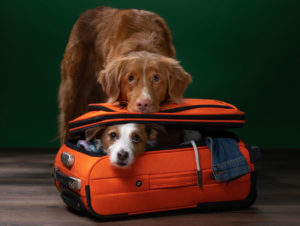
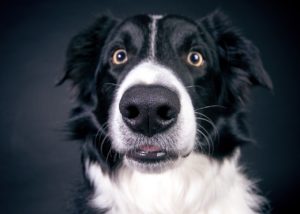
No comment yet, add your voice below!